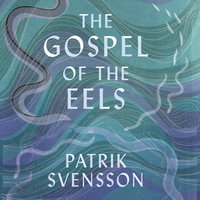ÅLEVANGELIET
av Patrik Svensson
Kortrecension (mars, 2020)
Augustpristagaren 2019 Patrik Svensson är en välförtjänt vinnare! Hur märkligt intressant kan inte berättelsen om ål förvandlas till, och bli en spännande bladvändare som förenar självbiografi, med miljöfrågor och filosofi. Märkligt och imponerande! Berättelsen om ålens säregna metamorfoser och mytomspunna vandringar från Sargassohavet vävs ihop med en kärleksfull berättelse om fadern, om Aristoteles, den unge Sigmund Freuds forskning på ålens sexualitet och fortplantningssystem, Johannes Schmidt forskning, Rachel Carsons narrativ, och många många fler, och för mig helt okända forskare och entusiaster i detta myller av fakta och myter som sakta flätar en vacker, men samtidigt skrämmande väv, av hur stort ansvar mänskligheten idag har för miljön.
Citat ur presentation hos Storytel:
’I can’t recall us ever talking about anything other than eels and how to best catch them, down there by the stream. Actually, I can’t remember us speaking at all. Maybe because we never did.’
The European eel, Anguilla anguilla, is one of the strangest creatures nature ever created. Remarkably little is known about the eel, even today. What we do know is that it’s born as a tiny willow-leaf shaped larva in the Sargasso Sea, travels on the ocean currents toward the coasts of Europe – a journey of about four thousand miles that takes at least two years. Upon arrival, it transforms itself into a glass eel and then into a yellow eel before it wanders up into fresh water. It lives a solitary life, hiding from both light and science, for ten, twenty, fifty years, before migrating back to the sea in the autumn, morphing into a silver eel and swimming all the way back to the Sargasso Sea, where it breeds and dies.
And yet . . . There is still so much we don’t know about eels. No human has ever seen eels reproduce; no one can give a complete account of the eel’s metamorphoses or say why they are born and die in the Sargasso Sea; no human has even seen a mature eel in the Sargasso Sea. Ever. And now the eel is disappearing, and we don’t know exactly why.
What we do know is that eels and their mysterious lives captivate us.
This is the basis for The Gospel of the Eels, Patrik Svensson’s quite unique natural science memoir; his ongoing fascination with this secretive fish, but also the equally perplexing and often murky relationship he shared with his father, whose only passion in life was fishing for this obscure creature.
Through the exploration of eels in literature (Günter Grass and Graham Swift feature, amongst others) and the history of science (we learn about Aristotle’s and Sigmund Freud’s complicated relationships with eels) as well as modern marine biology (Rachel Carson and others) we get to know this peculiar animal. In this exploration, we also learn about the human condition, life and death, through natural science and nature writing at its very best.
As Patrik Svensson concludes: 'by writing about eels, I have in some ways found my way home again.'
Rachel Carson (1907-1964)



